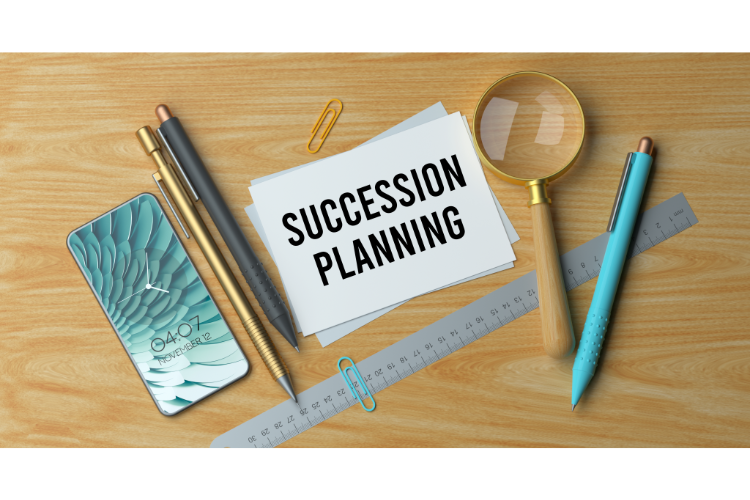
Board succession planning is an ongoing activity. Keeping a strong, effective board in place requires consideration of board composition and terms of service, board skills assessment, recruitment, nominations and development. The process of succession planning is helpful in ensuring the organization remains effective in meeting the needs of an evolving, sustainable organization.
Board composition
A non-profit, board of directors usually consists of 10-15 persons depending on what works for the organization. The size of the board is identified in its constitution. The size and membership of the board should be reviewed from time to time to ensure it is conducive to effective decision-making for the organization. Of these people, members should be elected for two-year terms, with terms overlapping. (ie half of the board in place for 2013-2014, the other half 2014-2015). It is not good practice to elect, and potentially replace, all board positions each year. Overlapping provides an opportunity for board members in existing terms to help mentor new members to the board.
Board skills
Many boards are now having their board members undertake a skills assessment. Board members can identify what skills they bring to the board of directors, such as financial, marketing & communications, human resources, legal, volunteer management, risk management, etc. Those that serve on boards usually come to the table with one or more of these areas from past volunteer or work-related experience. The skills assessment helps a board understand the talent they have at the table, and the skills that they can look for in future candidates. Understanding any gaps in skills on the board, can help it be more focused and effective in recruitment.
The size and membership of the board should be reviewed from time to time to ensure it is conducive to effective decision-making for the organization.
Recruitment
Effective recruitment takes time and effort and needs to be an ongoing activity. According to Board building, Recruiting and Developing Effective Board Members for Not-for-Profit Organizations, by the Muttart Foundation, while some organizations struggle to fill vacancies, others look at upcoming vacancies as opportunities to:
- Better reflect the diversity of the community;
- Create new opportunities for others, including youth to share diverse perspectives;
- Provide opportunities for leadership development and succession planning; and
- Balance boar member qualities required for current goals.
Recruitment must be based on specific criteria that relate to your organization’s needs. Some areas, identified in Board Building, Recruiting and Developing Effective Board Members for Not-for-Profit Organizations, that may be important in new board recruits include:
- An interest in your organization’s mission and the people your organization serves
- A sense of integrity
- The skills to work effectively with others
- A willingness to learn and grow
- A sense of a wider community
- An orientation to the future
- Enthusiastic support for your organization
- Geographical location
- A commitment of time
- A willingness to use special skills
- An ability to support board fundraising activities
- A sphere of influence.
Nominations
A Nominations Committee is often appointed by the board to develop and maintain records of board and board committee members including information on skills, interests, experiences, board-related orientation and training and terms of service. The Nominations Committee may work with the board to identify future board needs, analyze the strengths and weaknesses within the currently board, identify necessary selection criteria for recruitment, gather and generate names of prospective board members, research and screen prospective board members, recommend a list of possible board nominees to the board, and work with the Board Chair to make sure the proper nomination and election procedures are followed.
Engage all individual board members and the membership to make suggestions for potential board recruits. A quick and informative follow up with potential recruits by the Nominations Committee will add to the success of this measure.
Getting elected
You may have recruited a variety of good candidates, but your board members still need to be elected by the membership. Ensure you have a fair system of sharing the skills and attributes of these potential candidates with the membership.
Development
Once on the board, new board members need to be mentored in their role. A solid Orientation for new and existing board members helps to create a welcome environment for new members, and an opportunity for existing board members to help mentor and build new relationships. Many organizations provide their members with opportunities to develop and improve their leadership skills.
Board development opportunities provide:
- A Common frame of reference;
- The knowledge and experience needed to be effective board members;
- The motivation to reflect, critically think and generate new ideas;
- The skills to make informed decisions, and to be creative and innovative;
- The attitudes necessary for mutual support and respect;
- The confidence to be advocates for the organization;
- The skills and knowledge to provide leadership to the organization; and
- The motivation to sustain their board role.
Effective boards are willing to cultivate prospective board members. People often need to gradually become involved in the organization through other activities before taking on a board role. Involving young people in leadership development activities also develops a source of future board members.

